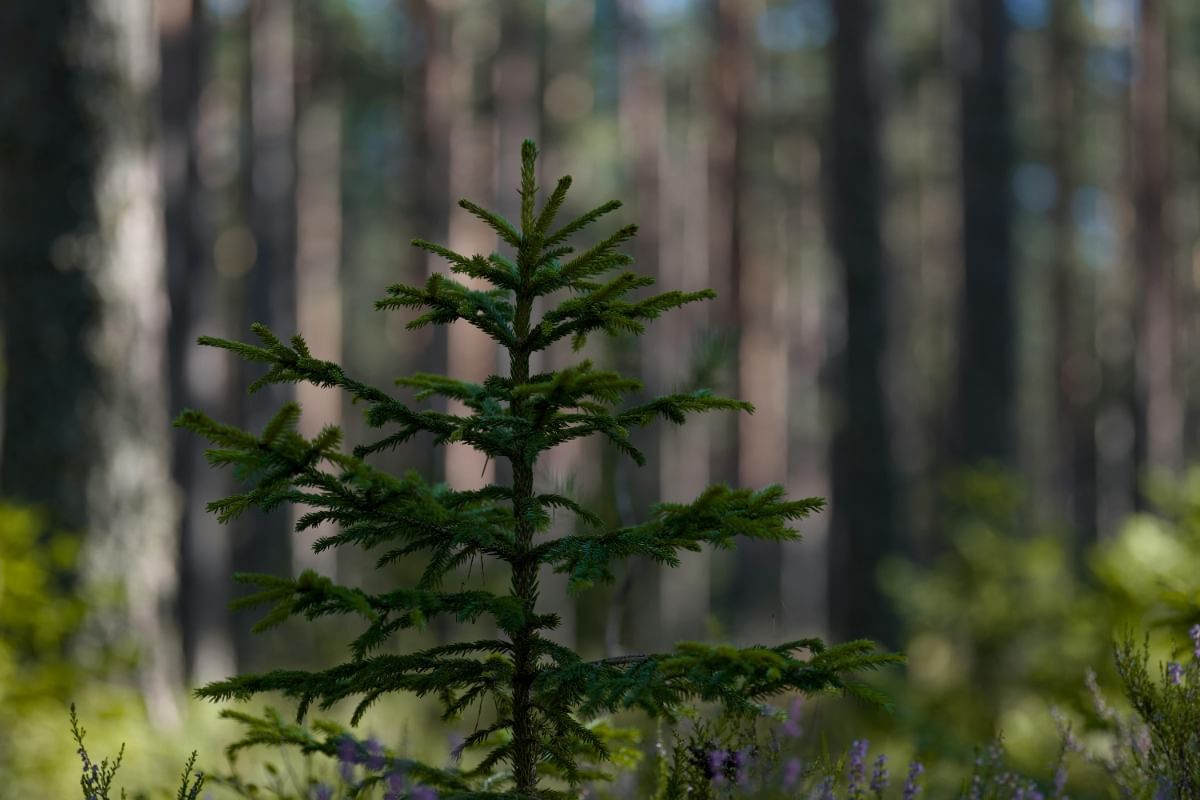Get storm-ready! Be hurricane-prepared BEFORE the season starts.

How to Support Young Trees
Taking care of young trees is one of the most important steps you can take to keep your landscape strong and healthy. Whether you planted a tree in your backyard or are managing a new landscape project, young trees need special attention in the first few years. At Tangi Tree, we know that the right support at the start makes all the difference in how a tree grows over time. Learn what to do right after planting, how to help the tree stay upright, how much to water it, and how to protect it from damage. With the right care, your trees will grow straight, strong, and healthy.
Choosing the Right Tree for the Right Spot
Before you even plant a tree, you need to make sure it is suited for your area. Trees need the right soil, sunlight, and space to grow properly. If a tree is planted in poor soil or in an area with too much shade or wind, it will struggle no matter how well you care for it.
When choosing a young tree, look for one with a straight, central trunk and branches that are evenly spaced. Avoid trees with obvious wounds, soft spots, or roots circling the root ball. These issues can lead to problems later on.
Check these before planting:
- Make sure the planting area gets the right amount of sun.
- Check that the soil drains well and is not too compacted.
- Choose a tree that matches your space and climate.
How to Properly Plant a Young Tree
The way a tree is planted sets the stage for its growth. A poorly planted tree can become stressed or unstable, making it more likely to fail.
Follow these steps for planting:
1) Dig a wide hole: The hole should be two to three times wider than the root ball but only as deep as the root ball itself. A wide hole helps the roots spread out into the surrounding soil.
2) Place the tree at the right height: The top of the root ball should be level with or slightly above the soil surface. Planting too deep can suffocate the roots.
3) Straighten the tree: Before filling in the hole, step back and make sure the tree is standing straight.
4) Backfill with native soil: Use the soil you dug out to fill the hole. Avoid adding compost or fertilizer at this stage, as it can discourage the roots from growing into the native soil.
5) Tamp down the soil and water deeply: Firm the soil gently around the root ball to remove air pockets. Then water the tree well to help the soil settle.
When and How to Stake a Young Tree
Not all young trees need staking. Trees grown in containers or protected nurseries often have strong trunks and can stand on their own. However, if your tree is tall, has a small root ball, or is in a windy area, it may need extra support.
Signs a tree may need staking:
- It leans heavily and cannot stay upright on its own.
- The root ball is loose and moves in the soil.
- Wind or foot traffic makes the area unstable.
How to stake a tree:
1) Use two or three stakes placed outside the root ball: Stakes should be driven into the ground at an angle, pointing away from the trunk. Use wooden or metal stakes about 5 to 6 feet tall.
2) Attach the tree with flexible ties: Use soft, flat material like rubber tree straps or cloth ties. Never use wire or anything that could cut into the bark. Place the ties about one-third of the way up the trunk and leave some room for movement.
3) Allow slight sway: A tree that moves slightly in the wind will develop a stronger trunk. Ties should be snug but not tight.
4) Remove stakes after one growing season: Leaving stakes on too long can weaken the trunk and girdle the bark.
Watering Young Trees the Right Way
Water is the single most important thing for a new tree. Roots are shallow at first and need consistent moisture. Overwatering can be just as harmful as letting the soil dry out completely.
Watering guidelines:
- Water deeply once or twice a week. Let the water soak into the soil to a depth of 6 to 12 inches.
- Adjust based on weather. In hot or dry conditions, water more often. In cooler or rainy conditions, water less.
- Check soil moisture with your fingers or a moisture meter. If the soil feels dry a few inches below the surface, it's time to water.
- Avoid watering the trunk. Keep the water focused at the root zone, not the base of the tree.
Mulching can also help keep the soil moist. Spread a 2- to 3-inch layer of mulch around the base of the tree but keep it a few inches away from the trunk to prevent rot.
Protecting Young Trees from Damage
Young trees are more likely to be harmed by animals, lawn equipment, pests, and disease. Damage to the bark or roots can weaken the tree and slow its growth.
Common threats and how to protect against them:
1) Weed trimmers and lawnmowers: Place a protective trunk guard or a circle of mulch around the base to prevent mechanical damage.
2) Deer and rodents: Use tree guards or fencing to keep animals from chewing on the bark or rubbing against the trunk.
3) Insects and disease: Keep the area around the tree clean and free of weeds. Monitor for signs like yellowing leaves, holes in the bark, or sticky sap. If you see a problem, contact a certified arborist.
4) Human traffic: Avoid walking or placing objects on the soil over the roots. Too much foot traffic can compact the soil and limit root growth.
Training and Pruning for Strong Structure
Training a young tree means guiding its growth so that it develops a strong, balanced structure. Proper pruning during the early years helps prevent problems like weak branches, poor shape, or dangerous limbs later on.
Tips for pruning young trees:
- Prune in late winter or early spring while the tree is dormant.
- Remove dead, broken, or crossing branches. Start with anything that looks unhealthy or could rub against other limbs.
- Keep one central leader for most shade trees. Cut away any branches competing with the main trunk.
- Avoid heavy pruning in the first year. Let the tree focus on root growth.
- Never remove more than 25 percent of a young tree’s canopy in a single season. Too much pruning can shock the tree.
Fertilizing Young Trees
In most cases, young trees do not need fertilizer right away. They need time to adjust to their new surroundings. Fertilizing too early can encourage leaf growth at the expense of root development.
When to consider fertilizing:
- The tree has been planted for at least one year.
- Soil tests show a nutrient deficiency.
- The tree shows slow growth, pale leaves, or other signs of stress.
If you do use fertilizer, choose one with a balanced formula like 10-10-10 and apply it in the early spring. Always follow the label instructions and avoid getting fertilizer near the trunk.
Watching for Signs of Trouble
Even if you do everything right, some trees may still show signs of stress. Pay close attention during the first few years. Catching a problem early gives you a better chance to fix it.
Warning signs:
- Leaves turning yellow or brown out of season
- Wilting or drooping leaves even after watering
- Cracks or damage in the bark
- A leaning trunk that doesn’t correct itself
- Visible pests or signs of disease
If something looks wrong and you’re not sure what to do, reach out to a tree care expert. At Tangi Tree, we can diagnose the issue and offer the right solution.
How Long Does a Tree Need Support?
Most young trees take one to two years to get established. That means it takes at least that long for the roots to spread out and anchor the tree firmly in the ground. During this time, the tree will need regular care and monitoring.
General timeline:
First year: Frequent watering, possible staking, mulching, and light pruning.
Second year: Less frequent watering, remove stakes, continue monitoring.
Third year and beyond: The tree should be mostly self-sufficient, though it may still need pruning and occasional deep watering during droughts.
Trees that survive the first few years with the right support will often thrive for decades.
Tangi Tree Plants Your Tree Right the First Time
Supporting young trees is not complicated, but it does take time, care, and attention. Planting correctly, providing enough water, protecting from damage, and helping the tree grow strong through pruning and staking are all key parts of the process. These steps give your trees the best chance to grow tall and healthy.
At Tangi Tree, we believe in doing the job right from the beginning. If you’re planting new trees or need help caring for young ones, contact our team today. We’re here to support your trees just like we support our customers with care, knowledge, and trusted service. Let us help you grow something great.






